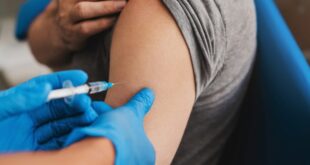By: Olivier Acuña Barba •
Published: 12 Jun 2025 • 12:55
• 6 minutes read
All you need know about sun protection for children, pets and even your own children. Credits to Shutterstock| Credits: Shutterstock
It is a fact that ultraviolet radiation can cause skin cancer, cataracts and infections.
As temperatures rise in Spain and other European countries, as we approach the possibly hottest summer ever recorded, it is vital that we protect our skin from the sun. This is especially important when taking a walk or going to the seaside.
This article by Euro Weekly discusses whether the sunscreen you bought from another country was of high quality, if it expired, if dogs can use it, if it is safe to use while breastfeeding, etc.
Can I still use sunscreen from last year?
After the container has opened and been unsealed, it is not recommended to use last year’s sunblock. Over time sunscreens will oxidise, losing their effectiveness.
The Spanish Agency for Medicines and Health Products and the European Commission explain, that after one year, the container has been opened, it may not provide adequate protection and they advise against using this product again in the following year.
How often should you use sunscreen?
Advice on a single page statementThe AEMPS recommends that you apply sunscreen every two-hours, and after swimming, sweating, or drying off.
Eduardo Noguera is the Clinical Head of Dermatology at the Valencian Institute of Oncology. He explained that sunscreen lasts for two hours on skin before it degrades. This time will be reduced if you have been swimming or exercising for a long period of time.
José Aguilera Arjona, a biologist specialised in Photobiology, and national coordinator of the Spanish Group of Photobiology of the Spanish Academy of Dermatology and Venereology (AEDV), told The Science Media Centre says that applying sunscreen to your skin every morning is enough for everyday activities such as going shopping, to the store, to work, to coffee, or just relaxing on your terrace in the shade.
Aguilera stated that it is best to apply the rule every hour-and-a-half to two hours when doing other activities such as swimming, exercising or going to a beach.
Both experts informed SMC, that water-resistant (also called waterproof) sunscreens adhere better to skin and are therefore more suitable for sport, swimming, sweating or other activities. They both agreed, however, that the tip to reapply sunscreen every two hours still holds true.
How much and when should I apply?
AEMPS recommends two lines of extended fingers for the face, and two tablespoons (about 30ml) for the body. You can reduce the amount of protection by using less.
AEMPS stresses the importance of applying the sunscreen to your entire body, especially if you have sensitive skin. Don’t forget to apply it to your lips, ears, balding spots, behind legs and arms and to your lips.
There are many types of sunscreens.
In order to avoid confusion, sunscreen labels must clearly state the level of protection provided by each type of ultraviolet radiation.
AEMPS recommends that you combine products that block UVB and UVA radiations with other protective measures, such as clothing, hats and sunglasses.
The American Cancer Society explains UVB rays can cause more skin cancer.
They do add, however, that UVA and UVB can cause skin damage and skin cancer. There are no UV rays that are safe. Everybody’s skin is different, but everyone can get skin carcinoma.
Even on a cloudy day, UV radiation can cause sunburn. This is according to the US Environmental Protection Agency. UV radiation can sunburn you even if it’s cloudy, according to the US Environmental Protection Agency said.
Sunscreens made in other countries
Aguilera Arjona says that the effectiveness of sunscreens is almost identical at an international scale, although each country may have its own specific regulations. “Europe has made a recommendation on labeling since 2006.
Aguilera said that all sunscreens adhered to the same ISO standards. These are international regulations which specify whether or not a sunscreen is water-resistant (protecting both UVB and UVA), broad-spectrum, or has a certain SPF level.
A sunscreen that’s 50 plus in the United States, he says, is the same in Australia or Japan.
Clothing and other products with UPF
The chemical filters in sunscreens absorb ultraviolet radiation. These sunscreens can be mixed with other substances, and come in different forms such as lip balms and gels. They are also available in invisible sprays and can be used for specific conditions and areas, like seborrheic skin dermatitis or acne. Experts warn that they can cause problems such as allergies, irritation, and toxicity.
Physical filters are a barrier that acts as a reflector and disperser of ultraviolet rays. This includes everything from clothing, umbrellas and opaque patches. Each item’s protection factor must be considered. The UPF is similar to SPF for sunscreens and compares how long it takes a person to get burned to that of the fabric.
To simplify, the heavier and thicker the clothing you wear in the sun will provide you with more protection.
Cotton and polyester fabrics are less protective than rayon or polyester. Cotton, polyester, and synthetic fabrics protect better than linen.
AEMPS warns however that there is no way to protect your skin 100% from the sun. Therefore, it’s best to avoid prolonged sun exposure. This is especially true between 10:00 and 4:00.
Children and sunblock
AEMPS and European Commission both advise against the use of sunscreens for children younger than six-months, as toddlers are more likely to absorb chemicals and have toxic side effects. Avoid exposing babies to direct sunlight as much as possible.
After six months parents should continue to use sunscreens that are pediatric-formulated and have the highest SPF.
In general, it’s best to keep children out of the sunlight until at least age three. Even then make sure that they wear protective clothing, hats, or sunglasses.
Breastfeeding & sunscreen
Regular sunscreens that, as we’ve seen, contain chemical filters are absorbed by the skin, and can pass into breast milk. Despite the low risk, it is not recommended to use them during breastfeeding.
Mineral sunscreens are highly recommended by experts. Also, avoid the sun.
Aguilera Arjona recommended that you avoid the sun. If you do use sunscreens, make sure they are mineral sunscreens. They should not, however, contain nanoparticles as they can penetrate skin.
What about your pets?
All animals are susceptible to the harmful effects caused by ultraviolet radiation. In the case of dogs and cats, they can develop burns and tumors where the hair is absent or very short, such as “the abdomen, the inner thighs, the nose, eyelids, and ears,” Maria Luisa Fernández Miguel, clinical veterinarian specialising in companion animals and president of the College of Veterinarians of Tenerife, told Science Media Centre.
To prevent complications, Fernández Miguel recommends avoiding direct and prolonged sun exposure. You should take your dog for a walk early in the day or late in afternoon.
Use sunscreens that are adapted to the species on any exposed skin, particularly if your animal has light-coloured or pink skin.
The expert explains that squamous cells carcinoma is common in veterinary clinics. It can be found in ear pavilions as well as on the eyelids and noses of animals with white hair and pink mucous membranes. “If the skin in these areas is darker or black, it is also protected from solar radiation,” says the expert. Sun exposure can cause melanomas in animals with dark-skinned skin.
Enjoy the sun, the beach and all the fun but remember to always put your health first. Mahatma Ghandi once said that “health is the real wealth and not gold or silver pieces.” Publilius Syrus’ version was: “Good sense and good health are two of the greatest blessings in life.”
 Costa News Spain Breaking News | English News in Spain.
Costa News Spain Breaking News | English News in Spain.





